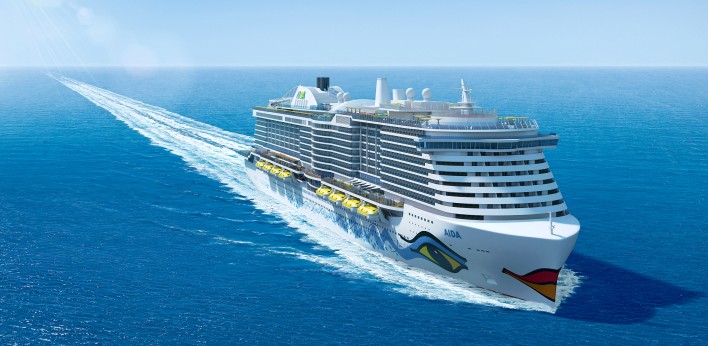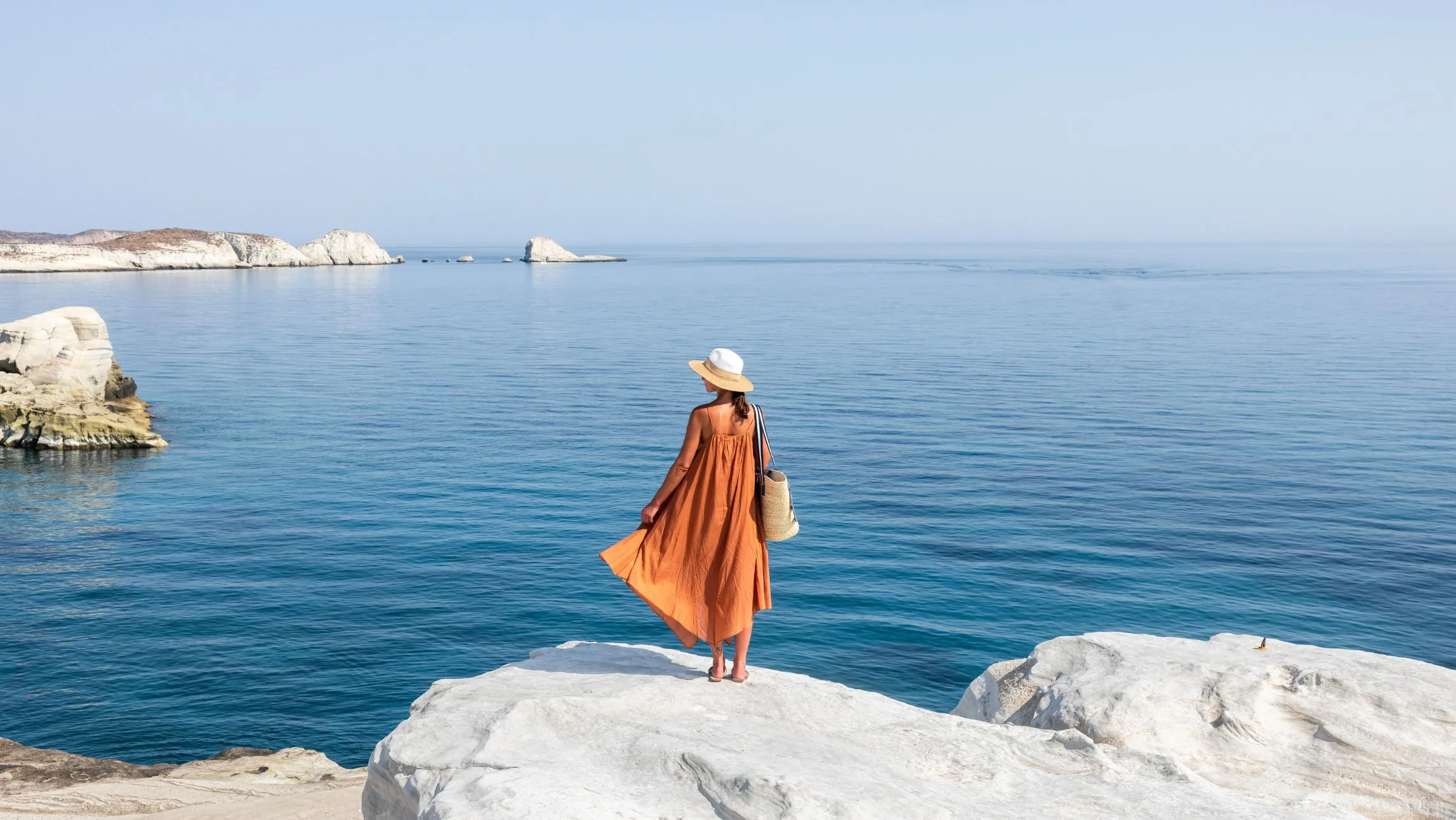When Sir David Attenborough, the voice of the BBC’s documentary Blue Planet series, addressed the UN climate conference in Poland earlier this year, his message was one that has been felt throughout the entire world.
Climate change is upon us, and our impact on the earth has sent us into a downward spiral towards an irreversible decline of the earth.
This was the year we saw freakishly large storms that whipped NSW, wildfires that swept through California and deadly earthquakes in Indonesia.
As a result, consumers and cruise lines are becoming more environmentally minded. We have seen a large global movement to ban the use of single-use plastics like drinking straws and shopping bags and the reduction of meat consumption.
Cruise lines have worked hard this year, with their efforts ranging from investing in cleaner fuel and technologies to reduce emissions to bringing waste management innovations onboard and building partnerships to reduce, reuse and recycle waste.
Most ships also sail with an Environmental Officer whose responsibilities include providing hands-on crew trainings, ensuring environmental compliance onboard as well as assisting in developing environmental policies and procedures.
“No single industry is more committed to preserving and sustaining the waters we sail – because our business depends on it. As a result, individual lines and the industry as a whole have taken strong steps in environmental protection, reducing pollution and preserving marine life and ocean health,” says Joel Katz, Managing Director Cruise Lines International Association (CLIA) Australasia.
“Several major cruise lines are eliminating single-use plastics not only aboard ships, but also throughout their supply chain. All lines have strong recycling programs to ensure that waste is reduced and minimized.”
Most lines have banned plastic straws onboard and others only provide them upon request or are only used with frozen drinks.
Lines like Royal Caribbean, Celebrity Cruises, Azamara Club Cruises, P&O Cruises, Cunard and Disney Cruise Line are taking it one step further with goals to eliminate all single-use plastics onboard.
Homegrown cruise line Virgin Voyages, whose first ship debuts in 2021, pledges to do the same.
According to CLIA, cruise ships recycle 60 per cent more waste per person than the average person does on land, so perhaps we should be looking to see how we can replicate their efforts while we are not on our cruise vacations.
Their fleet is also “well on their way” to meeting the goal of requiring all ships use low-sulphur fuel by 2020 with 26 LNG powered ships in the global cruise ship orderbook and plans to fit Exhaust Gas Cleaning Systems (EGCS) on almost 40 per cent of CLIA’s fleet.
The EGCS reduce the level of sulphur oxide emissions by as much as 98 per cent and have been fitted on 99 of CLIA’s cruise ships to date.
The industry looks the future with CLIA and the International Maritime Organisation working to develop mandatory measure for a 30 per cent reduction in new marine vessel CO2 emissions by 2025.
Read on to see what your favourite cruise lines are doing to make cruising cleaner for the environment:
Norwegian Cruise Line, Oceania, Regent Seven Seas
Norwegian Cruise Line Holdings brands have focused their efforts on increasing water production on board by installing water plants that uses seawater. This is particularly important in countries where fresh water is limited and best reserved for local populations. Over the past two years, their ships have produced more than 80% of their water onboard.
To prevent the dispersing of non-native organisms to other areas which can lead to degradation of popular destinations, Ballast Water Treatment Systems have also been installed. New ships delivered from 2013 all have these systems installed and in 2017, Norwegian Sky, Pearl, Jade and Regent Seven Seas’ Seven Seas Navigator have been retrofitted, with more to be completed in the future.
Seven of Norwegian’s ships Norwegian Escape, Gem, Jade, Jewel, Joy, Pearl and Sun also has Exhaust Gas Cleaning Systems installed.
Royal Caribbean, Celebrity Cruises, Azamara Club Cruises
On Royal Caribbean, 75% of the waste landed from their ships never sees a landfill as they are reused, recycled or converted to energy whenever possible.
In fact, 30 of their ships at one time were able to re-purpose all operational waste in 2017. The cruise line participates in container return programs with their vendors and have established a standard donation database for their fleet for items such as mattresses, sheets, towels, furniture and clothing.
With technological innovations, Symphony of the Seas is 25% more efficient than her sister ship built eight years ago. Since 2014, they have also retrofitted 19 ships with Exhaust Gas Cleaning Systems, in addition to the five newly deployed ships that are also equipped with the scrubbing technology.

To reduce fuel consumption, the company has also developed an Air Lubrication System that decrease friction between hull and water to offer net fuel savings of up to 4%. The system was partially installed and tested on Celebrity Reflection during development and was fully launched on the Quantum of the Seas. They continue to explore future full-scale installations onboard existing ships and potential new builds.
Carnival Cruise Line, AIDA Cruises, Princess, P&O, Costa Cruises
Carnival Corporation lays claim to the world first LNG powered cruise ship, AIDAnova, who has just begun her maiden season this month in the Canary Islands. She is the first of nine next-generation LNG-powered cruise ships ordered by Carnival across their brands like Costa, P&O Cruises UK, Carnival Cruise Line and AIDA.

Ship debuts from 2017 like AIDAperla and Majestic Princess are also fitted with dual fuel engines so they can run on LNG while they are in port.
They have also surpassed their 25% carbon dioxide reduction goal two years ahead of schedule at the end of 2017 and has 62% of their fleet is equipped with Exhaust Gas Cleaning Systems which reduces sulphur dioxide emissions.
In 2017, two of the Carnival Corporation brands started a pilot program onboard American and European ships, using equipment to digest food waste prior to discharge at sea. This technology significantly reduces food waste volumes.
Costa also began revamping its food & wine offerings based on sustainability principles and also teamed up with the food bank charity Fondazione Banco Alimentare to launch a global first surplus food donation program.
The program collects “ready to eat” meals prepared on board but not served and then distribute them via local associations to people in need. This initiative started operating on the Costa Diadema in Savona in July 2017 and was recently extended to include the Port of Civitavecchia in Rome.
Hurtigruten
The world’s largest expedition cruise line launched the world’s first battery-hybrid powered cruise ship, MS Roald Amundsen, this year.
The Norwergian cruise line is also looking to be the first cruise ship in the world to power their ships with liquified biogas, which is fossil-free, renewable gas produced from dead fish and other organic waste.

By 2021, Hurtigruten plans to operate at least six of its ships on a combination of biogas, LNG and large battery packs.
Northern Europe and Norway has large fishery and forestry sectors that produces a steady volume of organic waste and Hurtigruten wants to turn this waste into a resource.








